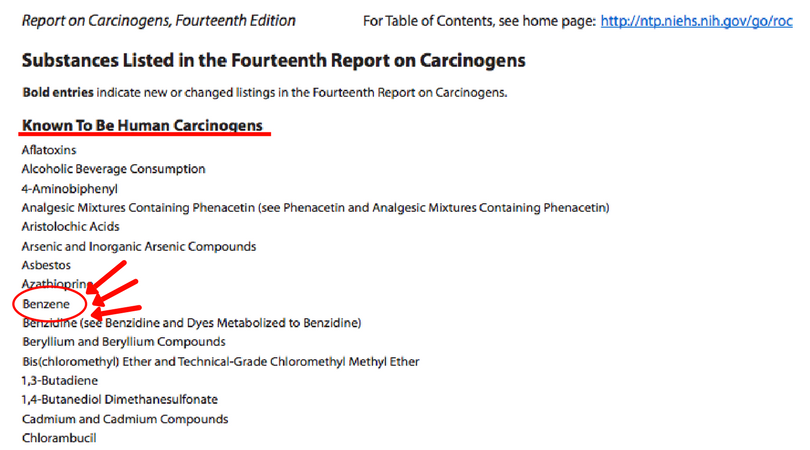We need to talk. Don’t you hate hearing those words? But seriously we need to talk. You know like the time your high school sweetheart wanted to talk and dumped you right before the prom. Well, this is kind of the same conversation only instead of breaking up with a boyfriend or girlfriend, it’s breaking up with those scented candles and room sprays you love so much. Sorry. It’s just time.
There is an alarming amount of household air fresheners and scented candles out there that parade around in cutesy “Christmas Tree” packaging when in reality, they should be marked with a skull and crossbones. Too harsh? Not really—the truth is that more and more studies are proving that these products that we use on a daily basis contain KNOWN HUMAN CARCINOGENS (CANCER CAUSERS).
Not to pick on the SC Johnson company, but hey, they walked right into this one. The first list is the US Dept. of Health & Human Services “Known Human Carcinogens”. The second list displays a list of ingredients that make up the “fragrance” portion of their “Glade” products. Hmmmm.


These are poisons secretly infiltrating your home in disguise. Unfortunately, the people creating these synthetic products and scents are more concerned making a buck rather than public health or we might actually know this information. Instead, we’re left to do our own research. Thanks for nothing.
What it means when you see “Fragrance” on the label
What should I look for on the label?
The next time you pick up your favorite candle or shampoo, check the ingredients on the label. Does it say “fragrance” or “parfum”? If so, there’s a lot more than meets the eye.
What is it?
The listed ingredient “fragrance” is on MANY common household products and though it sounds nice, the U.S. Dept. of Health & Human Services has tracked over 5,000 chemicals–in limitless combinations–used in these products today.
Why is it used?
This common ingredient is used to provide off a specific aromatic scent that appeals uniquely to each person shopping the aisles. It’s also used to cover up unwanted odors. Hello bathroom spray.
Why is this a big deal?
Personal care products, by law, must specifically list all their ingredients on the label, however, companies can get away with simply listing “Fragrance” or “Parfum” because it’s considered a trade secret. This makes it very easy for companies to hide what exactly is in their product. While candles and room sprays are not categorized as personal care products, they still take advantage of this abbreviated way to make scads of ingredients disappear by simply writing “fragrance”. How convenient.
What exactly is behind the “fragrance” label?
Benzene is just one example listed on the SC Johnson Company’s ingredient list for their candles and room sprays. No problem, right? Oh except that “Benzene” is listed by the U.S. Dept. of Health & Human Services as a “Known Human Carcinogen”. And don’t get us started on paraffin wax, which is created from petroleum byproducts and used in most candles, but if you want to look into it, we’ll let you make up your own mind. Sure, there are safe levels of chemical consumption through the air, but is it really worth it to test this out (and knowingly add to it) on ourselves or our kids?
Some safe alternatives for candles especially are ones made completely with soy. But be careful because there are some that have soy in them and can claim to be soy candles, even though they’re still mixed with paraffin wax. Make sure they’re 100% soy and you’re good to go.
So here’s the toxic truth: if you pick something up and read listed on the ingredients they use “Fragrance”, you’d be best served to put it back on the shelf.
Sources:
https://www.nrdc.org/sites/default/files/fairfresheners.pdf
https://www.whatsinsidescjohnson.com/us/en/fragrances-you-can-trust/our-palette
https://www.niehs.nih.gov/news/newsroom/releases/2005/january31/index.cfm
https://www.anapsid.org/cnd/mcs/candles.html
The post The Toxic Truth appeared first on ChiroPraise.


